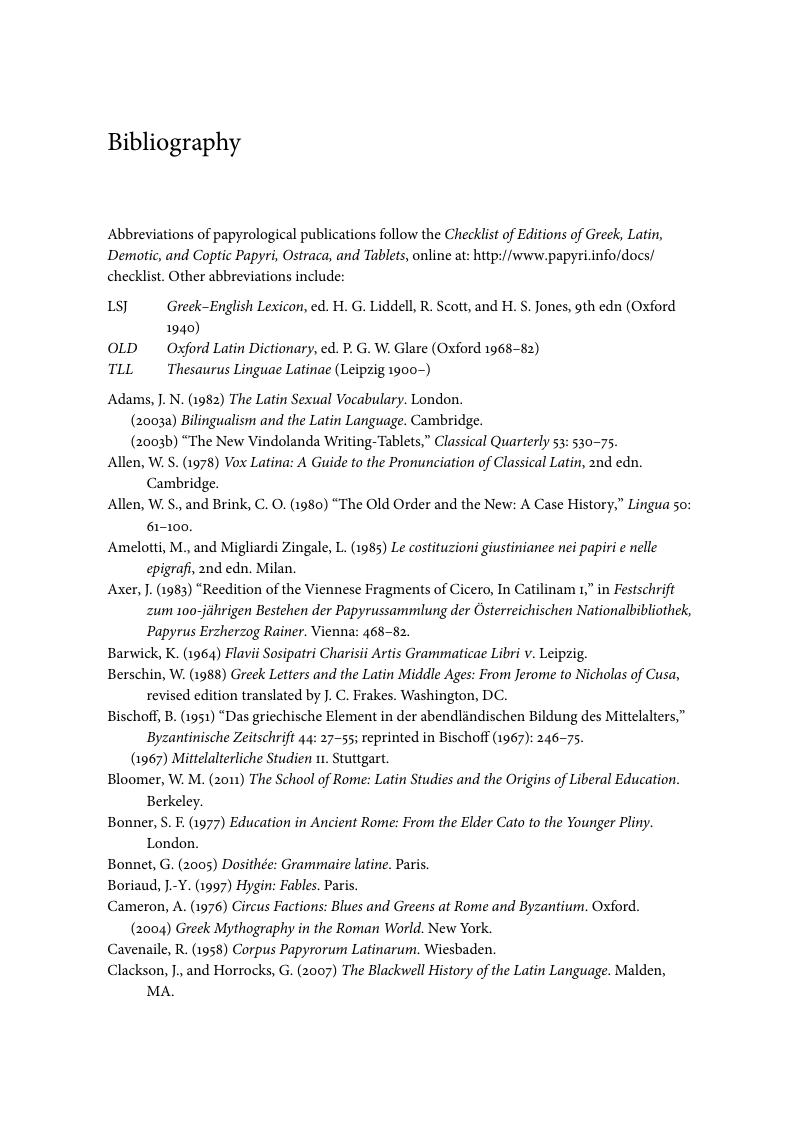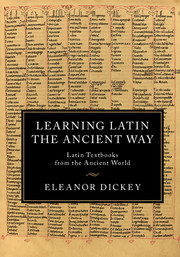Book contents
Bibliography
Published online by Cambridge University Press: 05 March 2016
Summary

- Type
- Chapter
- Information
- Learning Latin the Ancient WayLatin Textbooks from the Ancient World, pp. 183 - 187Publisher: Cambridge University PressPrint publication year: 2016



